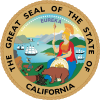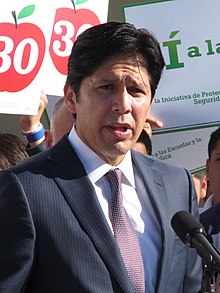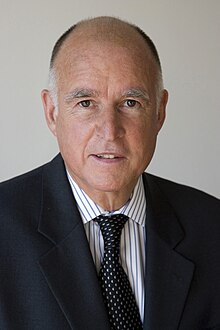User:Copulative/sandbox
| Copulative | |
|---|---|
 | |
| California State Legislature | |
| Full name | 100 Percent Clean Energy Act of 2018 |
| Introduced | May 1, 2017 (current form) |
| Assembly voted | - |
| Senate voted | - |
| Signed into law | - |
| Sponsor(s) | Kevin de León (author) |
| Governor | Jerry Brown |
| Code | Public Utilities Code |
| Section | 399, 454 |
| Resolution | SB 100 (2017-2018 Session) |
| Associated bills | Clean Energy and Pollution Reduction Act of 2015 |
| Website | Full Text |
Status: Invalid Status "Passed" | |
| Part of a series on |
| Environmental law |
|---|
 |
| Pollution control law |
| Natural resources law |
| Reference materials |
| Related topics |
|
California Senate Bill 100, or The 100 Percent Clean Energy Act of 2018, is a California state law which speeds up existing renewable portfolio standard requirements and sets a soft target which aims to generate 100% of California's retail-sold electricity from zero-carbon resources by 2045 (includes non-"renewable eligible" resources such as large hydro and nuclear power).[1]
As of 2017, California and Hawaii are the only states with statewide 100% clean energy goals.[2][3] However, Hawaii mandates 100% renewable energy, whereas California mandates 100% clean energy.[4]
Background
[edit]SB 100 was introduced by Kevin de León, who was at the time President pro tempore of the California State Senate, and it was eventually signed into law by Governor Jerry Brown. SB 100 builds on previous legislation also constructed by de León, SB 350 of the 2015-2016 legislative session.[1] SB 100 accelerates the goals set forth in SB 350 and significantly adds a new soft target of 100% clean energy for electricity sold at retail. Both of the bills' hard targets utilize the renewable portfolio standard program set in place[5] by former governor Gray Davis.
The legislation was passed approximately a year after the legislature voted to extend California's landmark cap and trade program in 2017.[6]


Requirements
[edit]SB 100 stipulates the following timeline:[1]
| By Dec 31, 2020 | 33% of California's retail-sold electricity must come from renewable eligible resources |
| By Dec 31, 2024 | 44% of retail-sold electricity must come from renewable eligible resources |
| By Dec 31, 2027 | 52% of retail-sold electricity must come from renewable eligible resources |
| By Dec 31, 2030 | 60% of retail-sold electricity must come from renewable eligible resources |
| By Dec 31, 2045 | Soft target deadline of having all retail-sold electricity generated from zero-carbon resources (includes non-"renewable eligible" resources such as large hydro and nuclear power) |
The law also requires that the Public Utilities Commission, Department of Water Resources, Energy Commission, and state board issue a joint report to the legislature no later than January 1, 2021, and every 4 years thereafter, discussing the soft target goal.[1]
See also
[edit]- Global Warming Solutions Act of 2006
- Climate change in California
- Renewable energy
- Solar power in California
- United States Climate Alliance
- Under2 MOU
- Sustainable Communities and Climate Protection Act of 2008
- California Senate Bill 32
- California Assembly Bill 197
References
[edit]- ^ a b c d "SB 100 Bill Text". California State Legislature Website.
- ^ May, Charlie (2 August 2017). "California looks to transition to 100 percent renewable energy by 2045". Salon. Retrieved 15 August 2017.
- ^ Trabish, Herman K. (14 June 2017). "Will California's 100% renewables goal survive the political process?". Utility Dive. Retrieved 15 August 2017.
- ^ Ige, David (8 June 2015). "PRESS RELEASE: GOVERNOR IGE SIGNS BILL SETTING 100 PERCENT RENEWABLE ENERGY GOAL IN POWER SECTOR". Gov. Ige. Retrieved 25 August 2018.
- ^ "SB 1078 (2001-2002 session)". California Legislature Website. Retrieved 15 August 2017.
- ^ "GOVERNOR BROWN SIGNS LANDMARK CLIMATE BILL TO EXTEND CALIFORNIA'S CAP-AND-TRADE PROGRAM". California Governor. 25 July 2017. Retrieved 15 August 2017.
